Super Easy And Fluffy One Bowl Plain Yogurt Muffins

Plain Yogurt Muffins are delicious but simple to make sweets, the yogurt variant of the classic muffins. Delicate and fragrant, they will be ideal for breakfast for the little ones or for a snack for the whole family.
The process is quick and easy, and does not require the use of butter, but of plain yogurt and seed oil, mixed with sifted eggs, sugar, flour and yeast; the resulting mixture, smooth and creamy, is poured into paper or silicone muffin cups, then baked in the oven for twenty minutes, until the muffins develop a golden and fragrant cap.
What Are Plain Yogurt Muffins?
While muffins themselves originated in 18th-century England as a type of yeast-leavened bread, the addition of yogurt to muffin recipes became popular much later, particularly in the 20th century. Yogurt, which has been a staple in many cultures for thousands of years, was introduced into baking as a way to create moist, tender, and slightly tangy cakes without relying on heavy fats like butter or cream.
The use of yogurt in muffins likely gained popularity through European and Mediterranean baking traditions, where dairy-based batters were commonly used for soft and airy pastries. Over time, the concept of yogurt muffins spread to American kitchens, where home bakers embraced them for their simplicity and nutritional benefits. Today, plain yogurt muffins are a beloved treat worldwide, appreciated for their delicate texture and versatility, allowing for endless variations with fruits, nuts, or spices.
Pro Tips for The Best Plain Yogurt Muffins1. Use Full-Fat Yogurt for Extra Moisture
- When combining the wet and dry ingredients, mix until just combined. Overmixing will develop the gluten in the flour, resulting in dense and tough muffins instead of light and fluffy ones. A few lumps in the batter are perfectly fine!
- Make sure your eggs, yogurt, and milk are at room temperature before mixing. This helps the ingredients blend smoothly, leading to a more even texture in your muffins.
- While butter adds flavor, using a neutral oil (such as vegetable or sunflower oil) will keep your muffins softer for a longer time. If you prefer butter, consider using a mix of both oil and melted butter for the best of both worlds.
- For perfectly balanced muffins, measure your flour using the spoon-and-level method instead of scooping it directly with the cup. Too much flour can lead to dry muffins. Similarly, be precise with baking powder for a good rise.
- Always preheat your oven to the correct temperature (around 180°C / 350°F). An oven that’s too cool or too hot can affect how your muffins rise and bake. If possible, use an oven thermometer to ensure accuracy.
- Check your muffins a few minutes before the recommended baking time by inserting a toothpick into the center. If it comes out with a few moist crumbs but no wet batter, they’re done! Overbaking can make them dry and crumbly.
- Allow the muffins to cool in the pan for about 5 minutes before transferring them to a wire rack. This prevents them from becoming soggy at the bottom while ensuring they stay light and fluffy.
What Does Yogurt Do In a Muffin?
Yogurt plays a crucial role in muffins by adding moisture, tenderness, and a slight tangy flavor. Its acidity helps activate baking powder or baking soda, leading to a better rise and a light, fluffy texture. Yogurt also adds richness without the need for excessive butter or oil, making muffins softer and more balanced in flavor. Additionally, it helps keep muffins moist for longer, preventing them from drying out quickly.
What Does Yogurt Replace in Baking?
Yogurt in baking can replace several ingredients, depending on the recipe. It can substitute for butter or oil to reduce fat while keeping baked goods moist and tender. It also works as a replacement for milk or buttermilk, adding creaminess and acidity, which helps baked goods rise properly. Additionally, yogurt can act as a substitute for sour cream or heavy cream, offering a lighter alternative with a similar texture and tangy flavor.
What's The Best Yogurt to Use For These Muffins?
Opt for full-fat plain yogurt instead of low-fat or non-fat versions. The fat content helps create a rich, tender texture and keeps the muffins from drying out. Greek yogurt can also work, but you may need to slightly adjust the liquid ingredients due to its thicker consistency.
Can I Use Sour Cream Instead of Yogurt in These Muffins?
Yes, sour cream can be used instead of yogurt in muffins! It has a similar creamy texture and tangy flavor, making it a great 1:1 substitute. Sour cream has a higher fat content, which can make muffins even richer and more tender. If the batter feels too thick, you can thin it slightly with a bit of milk.
What Else Can I Add to These Muffins?
If you like, you can enrich the dough with chopped hazelnuts or chocolate chips, or by adding blackberries, blueberries and raspberries, for a pleasant acidic note. If you prefer, you can flavor them with a drop of vanilla extract, the grated zest of a lemon, homemade jam or other fresh fruit. For a decidedly delicious combination, you can garnish them with a few spoonfuls of pistachio cream: they will be sold out in a flash.
Can These Muffins Be Made Ahead of Time?
Yes, these yogurt muffins can be made ahead of time! Once baked and fully cooled, store them in an airtight container at room temperature for up to 3 days or in the fridge for up to a week.
Do These Yogurt Muffins Freeze Well?
Yes, these yogurt muffins freeze very well! Once fully cooled, wrap them individually in plastic wrap or store them in an airtight container. They can be frozen for up to 3 months. To enjoy, simply thaw at room temperature or warm them in the microwave for a few seconds.
How to Store Plain Yogurt Muffins
To store these yogurt muffins, keep them in an airtight container at room temperature for up to 3 days. For longer freshness, refrigerate them for up to a week. Reheat as needed!
Ingredients
How to Make Plain Yogurt Muffins
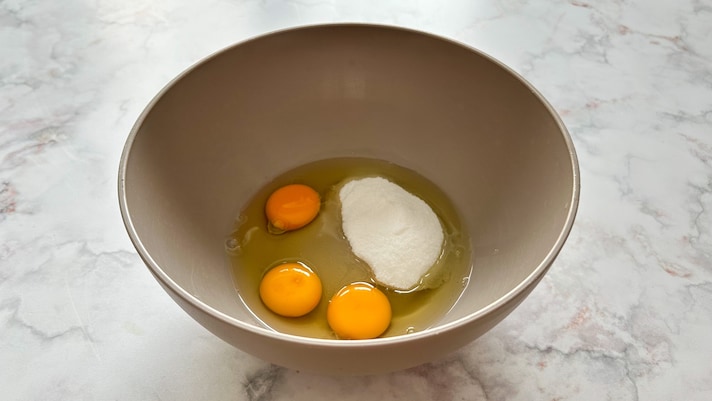
Pour the whole eggs and sugar into a bowl.
Pour the whole eggs and sugar into a bowl.
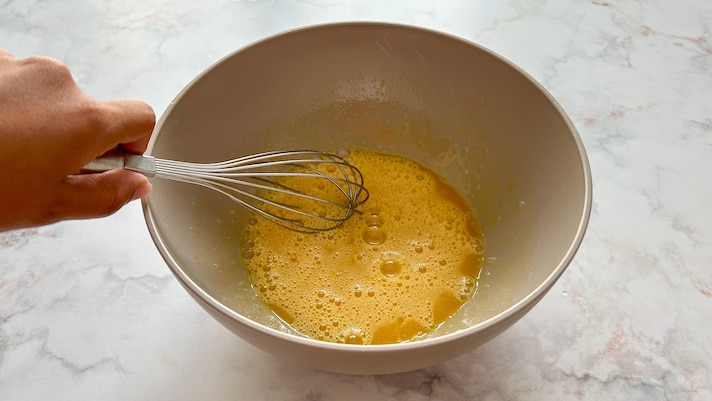
Whisk the ingredients together or, if you prefer, with an electric whisk at minimum speed, until the mixture is light and frothy.
Whisk the ingredients together or, if you prefer, with an electric whisk at minimum speed, until the mixture is light and frothy.
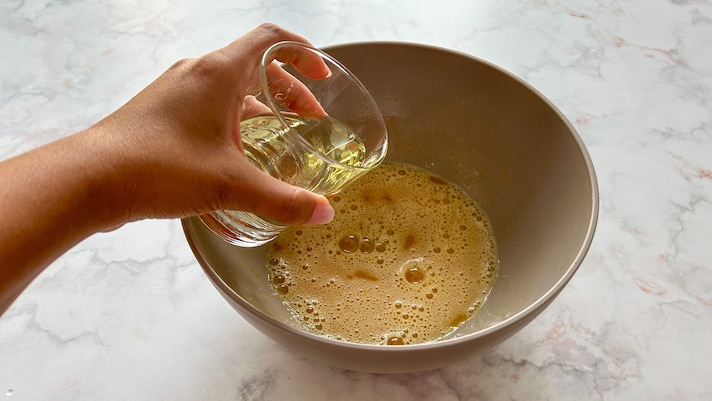
Pour in the seed oil.
Pour in the seed oil.
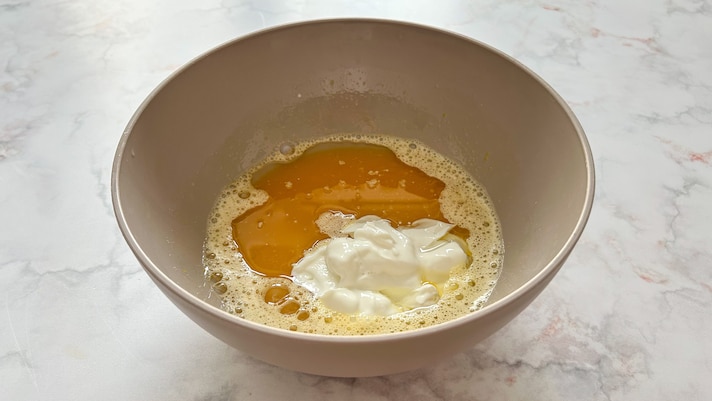
Add the yogurt too and mix vigorously to combine it with the eggs.
Add the yogurt too and mix vigorously to combine it with the eggs.
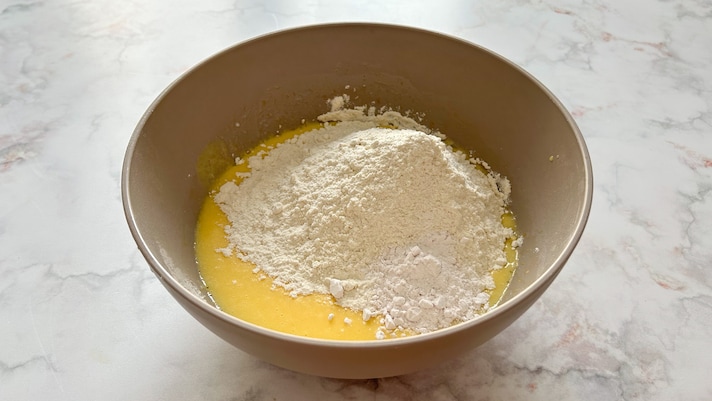
Pour the sifted flour and the yeast.
Pour the sifted flour and the yeast.
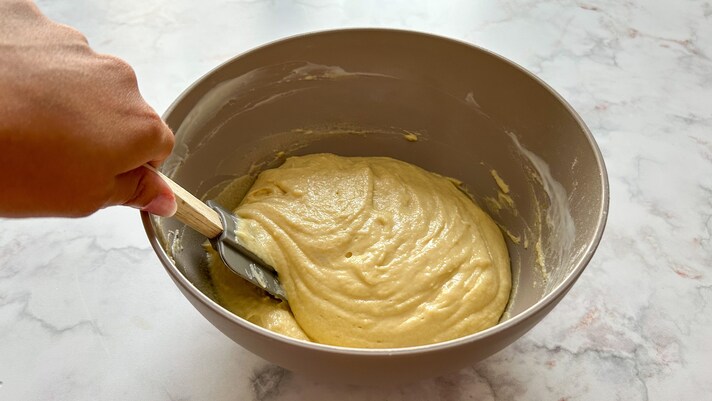
Mix everything together with a spatula until you get a smooth and creamy mixture.
Mix everything together with a spatula until you get a smooth and creamy mixture.
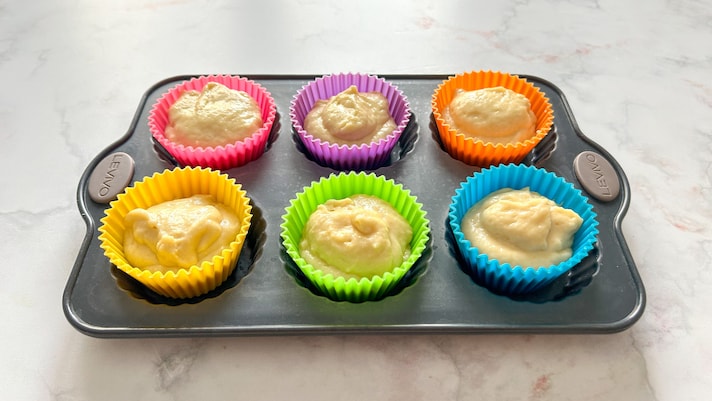
Pour the mixture into the muffin cups, in silicone or paper, depending on your availability.
Pour the mixture into the muffin cups, in silicone or paper, depending on your availability.
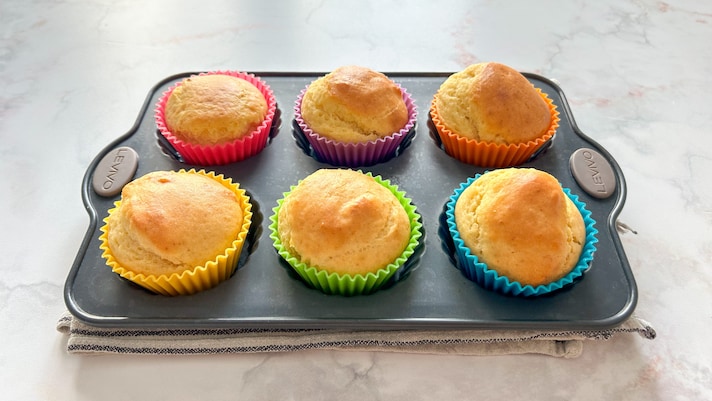
Bake the muffins in a preheated oven at 360°F/180°C for 20 minutes, until they are puffed up and golden. Let them cool completely, before unmolding them and transferring them to a tray or serving plate.
Bake the muffins in a preheated oven at 360°F/180°C for 20 minutes, until they are puffed up and golden. Let them cool completely, before unmolding them and transferring them to a tray or serving plate.
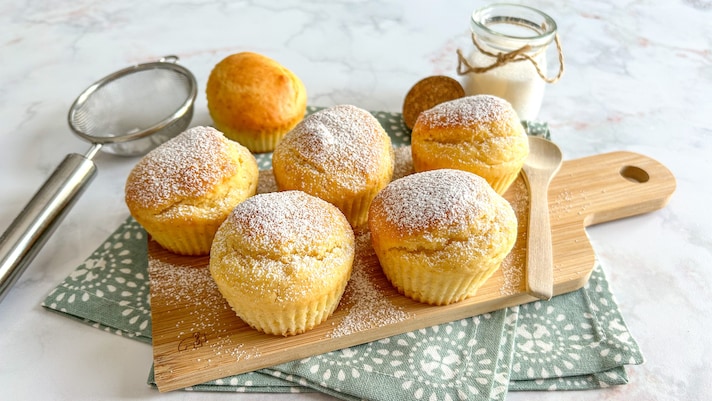
Sprinkle with some powdered sugar and enjoy!
Sprinkle with some powdered sugar and enjoy!
;Resize,width=767;)



